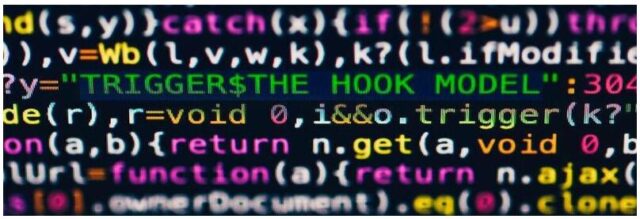The term event hook is a special webhook. This is used in distributed systems and provides information about the occurrence of special events. However, the communication process often causes difficulties.
An event hook, loosely translated as event hook, is a procedure in the field of server communication. Here it is a common phenomenon that in distributed systems (or also in the case of message-oriented middleware) machines that do not use the same communication method have to talk to each other.
The so-called webhooks (“net hooks”), which also include the event hook, are the solution for this. The name provides figuratively accurate information about what is happening. A hook connects the machines to a network so that they can understand each other.
Webhooks explained in a way that is easy to understand
In computer science, hooks are generally those interfaces through which code can be fed into a system that is actually foreign. As an example: Operating systems have countless corresponding hooks so that as many programs as possible can be installed. A webhook is the specialized form for server communication. It has the following characteristics:
- own code to be able to establish the connection between the machines
- capable of non-standardized communication
- Support of different messaging protocols
- Areas of application are (relatively) freely definable
Well-known applications that work with webhooks are, for example, Facebook, PayPal or Twitch. These mainly use the event hook.
Event hooks inform about special events
One area of application for webhooks is “event notification” – in other words, notification of special events. The procedure used for this is called the event hook. The programmers can freely define the events. Often they delegate part of the corresponding options to the users of the end devices.
An example is the notice on the lock screen of a smartphone that there is a new message in WhatsApp or in Facebook Messenger. In fact, in this case it is still a simple event hook to which the operating system has added an additional command.
In addition to the message, the sender’s server transmits the event alarm to the recipient’s server. This knows from the user’s smartphone that a corresponding notification is required. The server therefore forwards the message with the event alarm to the end device. Here, the setting in the operating system that the user has made decides whether the alarm (or perhaps even the entire message) is displayed on the lock screen.
Classic examples of event hooks:
- Notification of updates that can be installed
- Alarm that a certain event has occurred in an app (for example, a new video has been uploaded from a subscribed channel)
- Note on updates that are carried out automatically
- Security alert
- Notes on any problems (e.g. overfilled cloud storage)
Known difficulties
The programming of event hooks can be problematic mainly due to the communication procedures. It is often necessary to combine several different languages and protocols at the same time. Difficulties can also arise from the different layers of service that are supposed to react to the event notification. Especially with larger system updates, the hooks often no longer work as desired at the beginning.
